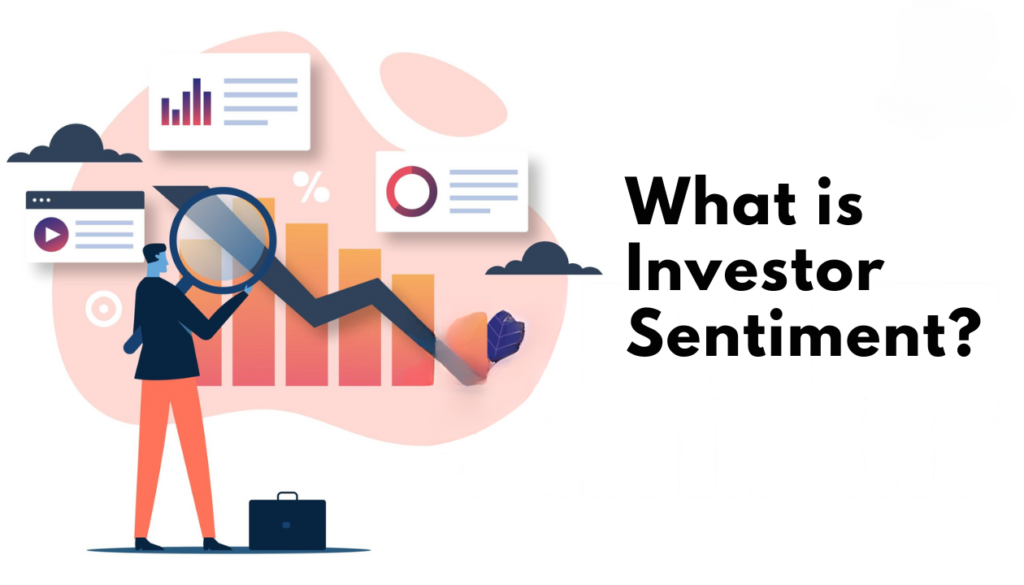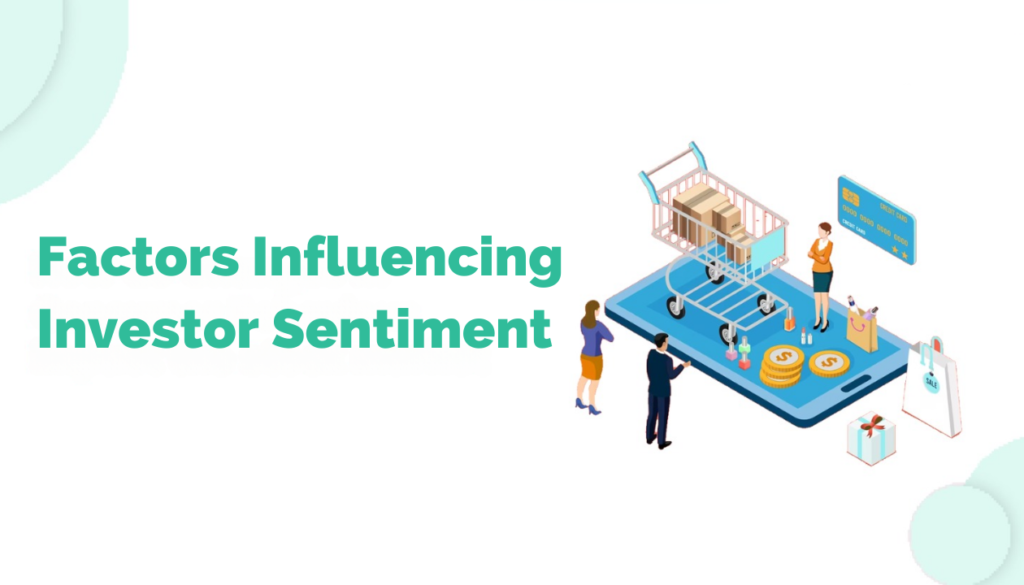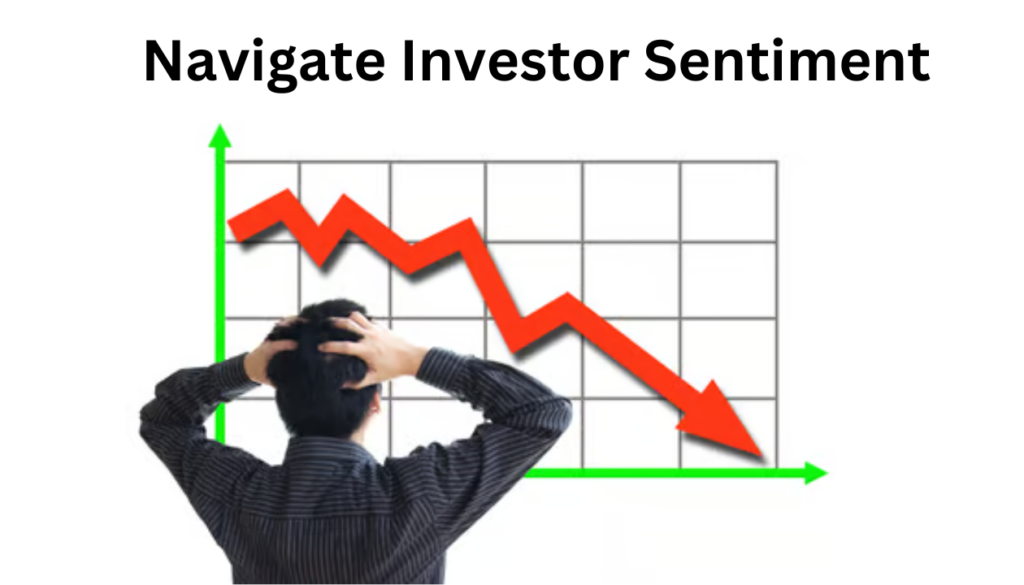In the ever-evolving world of finance, understanding the influence of investor sentiment on the stock market is crucial. Investor sentiment, the overall attitude of investors towards a particular security or financial market, can significantly impact stock prices and market trends. This blog delves into how investor sentiment shapes the stock market, the factors influencing it, and strategies for investors to navigate its effects.
Table of Contents
1. What is Investor Sentiment?

Investor sentiment refers to the overall mood or attitude of investors toward a market or specific asset. This collective sentiment can be bullish (positive) or bearish (negative) and is influenced by various factors, including economic indicators, company performance, and global events. When investor sentiment is high, stock prices tend to rise as investors buy more shares, driven by optimism about future returns. Conversely, when sentiment is low, stock prices often fall as investors sell off shares, fearing potential losses.
The Impact of Investor Sentiment on the Stock Market
Investor sentiment significantly influences stock market movements. Positive sentiment can drive up stock prices, creating bullish markets, while negative sentiment can lead to bearish markets. Here are some ways investor sentiment impacts the stock market:
A. Price Volatility: High investor sentiment can lead to increased trading volumes and price volatility. When investors are optimistic, they are more likely to buy stocks, driving prices up. Conversely, pessimistic sentiment can lead to selling pressure, causing prices to drop.
B. Market Trends: Investor sentiment often dictates market trends. Bullish sentiment can sustain long-term uptrends, while bearish sentiment can trigger prolonged downtrends. Understanding these trends helps investors make informed decisions about entering or exiting the market.
C. Herd Behavior: Investor sentiment can lead to herd behavior, where investors follow the actions of others rather than their analysis. This can amplify market movements and lead to bubbles or crashes. For instance, during a market bubble, positive sentiment can drive prices to unsustainable levels, eventually leading to a sharp correction.
D. Market Reactions to News: Investor sentiment shapes how the market reacts to news and events. Positive news can boost sentiment and stock prices, while negative news can dampen sentiment and lead to sell-offs. Investors’ emotional reactions to news often drive short-term market fluctuations.
2. Factors Influencing Investor Sentiment

Several factors contribute to shaping investor sentiment:
A. Economic Indicators: Key economic indicators such as GDP growth, unemployment rates, and inflation influence investor sentiment. Positive economic data can boost confidence and sentiment, while negative data can lead to pessimism.
B. Corporate Performance: The performance of individual companies, including earnings reports, mergers, and acquisitions, affects sentiment. Strong corporate performance can enhance investor confidence, while poor performance can lead to negative sentiment.
C. Global Events: Political events, natural disasters, and geopolitical tensions can impact investor sentiment. For example, political stability and favorable trade agreements can boost sentiment, while conflicts and trade wars can create uncertainty and negativity.
D. Market Analysis and Media: Media coverage and market analysis play a significant role in shaping sentiment. Positive reports and expert opinions can boost sentiment, while negative analysis can lead to pessimism.
E. Technological Advancements: Innovations and technological advancements in industries can influence sentiment. Breakthroughs in technology can create optimism about future growth prospects, while disruptions can lead to uncertainty.
3. Strategies to Navigate Investor Sentiment

Understanding and navigating investor sentiment is crucial for making informed investment decisions. Here are some strategies:
A. Diversification: Diversifying your investment portfolio can help mitigate the risks associated with volatile market sentiment. By spreading investments across various assets and sectors, you can reduce the impact of negative sentiment on your portfolio.
B. Long-term Perspective: Adopting a long-term investment perspective can help you stay focused during periods of high sentiment-driven volatility. Long-term investments are less affected by short-term market fluctuations caused by investor sentiment.
C. Regular Analysis: Continuously analyzing market conditions, economic indicators, and corporate performance can help you stay informed and make rational investment decisions. Avoid making impulsive decisions based on short-term sentiment.
D. Contrarian Investing: Contrarian investing involves going against the prevailing market sentiment. When sentiment is excessively positive, a contrarian investor might sell, anticipating a market correction. Conversely, they might buy when sentiment is extremely negative, expecting a market rebound.
E. Emotional Discipline: Maintaining emotional discipline is crucial in managing investments. Avoid letting emotions drive your investment decisions. Stick to your investment plan and make decisions based on analysis rather than sentiment.
Understanding the influence of investor sentiment on the stock market is essential for making informed investment decisions. By recognizing the factors that shape sentiment and implementing strategies to navigate its effects, investors can better manage their portfolios and achieve long-term financial success.
Frequently Asked Questions
1. What is investor sentiment, and why does it matter?
Ans. Investor sentiment is the overall attitude of investors toward a market or asset. It matters because it can drive stock prices and market trends, influencing investment decisions and market behavior.
2. How does positive investor sentiment affect the stock market?
Ans. Positive sentiment can drive stock prices up as investors buy shares, leading to bullish markets. It can also increase trading volumes and price volatility.
3. What factors influence investor sentiment?
Ans. Factors include economic indicators, corporate performance, global events, market analysis, media coverage, and technological advancements.
4. How can I navigate market volatility caused by investor sentiment?
Ans. Strategies include diversifying your portfolio, adopting a long-term perspective, conducting regular analysis, practicing contrarian investing, and maintaining emotional discipline.
5. Can investor sentiment lead to market bubbles?
Ans. Yes, high investor sentiment can lead to herd behavior and market bubbles, where prices reach unsustainable levels, eventually resulting in sharp corrections or crashes.
